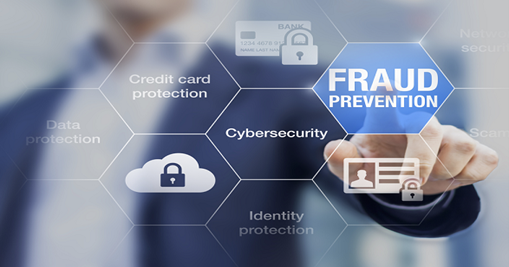Helping Kids to Achieve Financial Literacy Post-High School
Stacey J. Drubner, JD, LICSW, MPH

Helping your Kids to Achieve Financial Literacy Post-High School
EAP Ask the Expert: James Potter, Vice President, Retail Branches – Merrimack Valley Credit Union
So, your kids have made it through high school and will be moving onto the next phase of life. Whether kids are heading to college or taking another path, this is the time that parents wonder how their kids can start to become more independent and mature. This can be a complicated transition for all parties. Each family has their own culture and parenting philosophies, and each child has different capabilities and needs.
One area that is often overlooked in this process is financial literacy – “possessing the skills and knowledge on financial matters to confidently take effective action that best fulfills an individual’s personal, family and global community goals.” While there is a range of interest and skill level for finances in the teen and young adult populations, the data shows room for improvement overall.
According to an EVERFI survey,
- Less than 50% of high school juniors and seniors felt they could select, open, and manage a savings or checking account
- Only half of juniors and seniors reported being “prepared” or “very prepared” to set up and follow a budget
According to a 2024 Market Watch Survey on Generational Banking Trends, about 35% of both millennials and Gen Z trust financial advice they find on social media.
Parents cannot necessarily depend on schools to provide financial literacy training. Several states require basic financial education in high school, but Massachusetts is not one of them.
For this month’s EAP feature, we turned to expert, Jim Potter, from the Merrimack Valley Credit Union, to learn some tools parents can offer their children for a baseline understanding of the core components of financial literacy and a head start for a healthy financial future. Jim has provided much of this guidance to his own 3 children.

Why is Financial Literacy Important?
Jim explains that a basic understanding of one’s personal finances as it relates to budgeting, investing, and borrowing is needed as we grow and go through different cycles of life. It allows you to build a foundation to meet your goals, such as:
- Buying your first car
- Saving or investing for retirement
- Purchasing a home
- Starting a family
- Paying for college
- Having the money you need for interests, such as travel or hobbies
- Building your own business
- Being prepared for unexpected costs, such as home or car repairs or a health crisis
Taking the time to learn about finances can also provide peace of mind. As is the case with many things that make us anxious, ignoring our financial situation will cause more trouble and worry in the long run.
Bank Account Basics
Jim recommends that all kids open a savings and checking account, with a debit card. This is an area where doing your homework on which bank accounts are the best match can make a difference. It might make sense to use the bank where parents have their account.
Look for opportunities with:
- Waiver of checking account fees
- No minimum balance requirements
- Low or no ATM fees
- An overdraft line of credit
– This may require a parent to co-sign for eligibility, as it’s based on income & credit score, which many don’t have at 18.
In most cases, Jim suggests having one parent on the new accounts, at least initially, until kids have a chance to mature and establish themselves financially. This allows for easy online access and money transfer and can allow for greater account oversight and security.
Encourage kids to take steps to manage their own accounts by:
- Checking regularly (even daily) on the mobile app or online banking for:
– Balance
– Posted transactions
– Possible fraud
- Establishing low balance thresholds and setting up notifications
Being Credit Card Savvy

College Finance reported that 96.3% of college students experience some form of debt, with a big portion of this being attributed to credit cards. Average credit card debt was over $3200, with close to 40% of college students missing a payment. The key is to set up a system to avoid getting into debt in the first place:
- Start with a credit card with a low limit ($500)
- Choose a card with a low interest rate & be aware of hidden fees
- Consider getting the card from the same institution where the bank accounts were opened
– This is most efficient & allows for access via one app
- Get a card that offers points or cash back based on what works best for your interests; for example, it might make sense to select a card that earns frequent flyer travel miles if planning to travel often
- Use the debit card for regular purchase & the credit card more sparingly for “special” purchases
- Always make monthly payments, even if it’s just the minimum amount due
- Set up autopay for regular bills such as mobile phone and auto insurance to avoid missed payments
Establishing Credit
Jim points out that parents may need to be on credit card accounts if their kids don’t have a credit score yet. In order to build credit, kids must have 4 lines of credit, via:
- Student loans
- Line of credit/overdraft
- Credit cards
Once they pay the monthly minimum on all of the above for 6 months, kids can start looking at credit reports and scores. It’s important to check credit reports to make sure there is no fraud or unintended accounts or loans opened.

Keeping Expenses in Check
It may not be easy for kids to limit their spending. Some are used to parents doing this for them (or not setting any limits at all), and there is no shortage of temptations.
There are steps college students can take to keep expenses from getting out of control.
Take advantage of student discounts, perks & community programs
- Learn about organizations that provide support such as the Freshman 15, or stipends on campus to help with expenses for items like computers or eyeglasses
- Use campus services for food and the gym
- Keep updated on student discounts via companies like Amazon or businesses where your schools are located
- Consider work study
- Be mindful of managing and limiting online service and app subscriptions (streaming and gaming for example) that add up financially and renew automatically, often with price increases

Budgeting and Saving
An important part of keeping expenses in check is establishing a budget. Some kids will benefit more from a strict, detailed budget and others may only need a loose one. Parents can support this process by clearly communicating about (and sticking to) the expenses they will cover and how much they will contribute to the regular budget. While this may represent a change in what all parties are accustomed to, it will allow kids to be more independent and responsible in the long run. Consider:
- An honest evaluation of needs versus wants
- Income
- Expenses
- A regular amount to add to savings, even if it is a small contribution of $10 or $20 a week
– Jim suggests teaching the value of “paying yourself first”
- Using Budgeting apps or Credit card statements to make this process easier
Some kids may show an interest in investing early on. Here are a few resources to get them started
- The Basics of Investing from Fidelity
- StockSense – Financial Literacy App Developed by Milton Academy Students

Addressing Debt
In an ideal world, if you follow the guidance above around budgeting, live within your means and monitor accounts, you can avoid getting into debt. However, Jim points out that it is common to max out at any age, but especially when new to managing finances. Spending can get out of control, or an unforeseen expense (car repair) can arise. Resolving debt takes time and effort but it’s not impossible. Here is some guidance:
- Be aware of how much debt you have by logging into your accounts
- Ensure that your monthly payments are on track and up to date
- Ignoring your debt is not a sustainable solution
- Less judgmental parents typically have kids who are more likely to seek advice
- Address the debt
– Change behavior
– Reduce spending
– Create a budget
– Pay off a little each month

Planning for a Crisis & Building an Emergency Fund
Jim explains that at this age, an Emergency Fund is probably the savings account. In terms of financial literacy, this is a good time to educate about the concept, which has an eventual goal of saving enough to cover regular expenses for 6 months. Achieving this takes time.
Do Kids Need to Focus on Student Loans?
While an active student, it’s not necessary to sign on regularly. Jim recommends having an awareness of how much is accrued in student loans and what needs to be paid back eventually.
Fraud Protection

In a recent feature, we partnered with MGH Security to highlight the increased risk pertaining to on-line fraud for teens and young adults. Here is key guidance that is relevant to finances.
General
- Teach kids the value of patience
- Be careful with purchases. If no legitimate site has a certain item, then someone offering this item (immediately or for a cheap price) is probably not a real seller
- Take precautions when using social media sites
- Be conservative with sharing information. Take the time to know who is on the other end of your personal data & why they want this information
- Use Password protection and 2-factor authentication (such as texting an authorization code)
- Install Antivirus and Malware Software
- Understand website tracking
- Perform all updates on devices to increase security
- Encourage kids to find out about and address what is on the internet about them via Google, Nuwber & opting out of unnecessary sources of personally identifiable information
- Bookmark Have I Been Pwned? to assess risk due to an online account being compromised as part of a data breach
- Be extra careful when sending money via apps such as Zelle or Venmo & take advantage of all security measures
- Do not take financial or investing advice from questionable sources, such as those found on social media
Responding to Scammers
Don’t panic or react without an informed plan for responding. Failing to do so can result in more significant consequences
- Run virus scans to check for potentially malicious software installed by the scammers
- Contact financial institutions immediately by using the number on the back of bank cards or by visiting the institution in person. Always use the official website. Do not respond to an email or phone calls directly & act as soon as possible.
- Review your credit reports to make sure everything is accurate
- Use Fraud alerts & security freezes
- Dispute any inaccurate information you find in your credit report
- Change all passwords if the scammer had access to your devices
- Keep all original documentation such as texts or emails
- File a report with your local police
- Document a complaint with the FBI’s Internet Crime Complaint Center
- If you think your identity might have been compromised, file an identity report with:
– The Federal Trade Commission; 1(877) FTC-HELP (1-877-382-4357) or TTY 1-866-653-4261
Resources
Financial Resources for MGB Employees
EAP Financial Education Information
EAP Budgeting & Debt Management Resources
Fidelity – Teen Learning Center
Merrimack Federal Credit Union
Help from the EAP
The EAP offers free and confidential services for employees and immediate household family members. EAP records are separate from medical and HR records. Contact the EAP at 866-724-4327 or request an appointment via our online form for confidential assistance. In-person appointments are available at the following locations. Phone or Video (Zoom) appointments are available from all locations.







